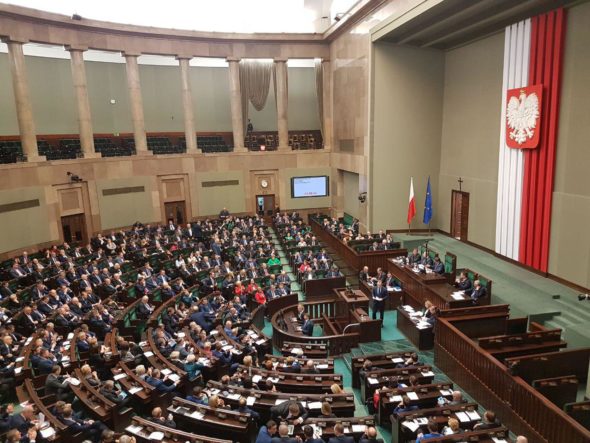What goes on in Poland on the 7th of February.
PSEW: Suski’s amendment will axe 84 percent of planned onshore wind turbines
If the politicians adopt the amendment that will increase the minimum distance between a wind turbine and buildings from 500 to 700 meters, 84 percent of spatial development plans (LSDP) will end up in the trash. PSEW claims that due to the amendment only 4 GW of new onshore capacity will be added before 2030.
According to an analysis by Urban Consulting, as many as 84 percent of LSPDs that allow for the construction of wind power plants may end up in the trash if the distance is increased to 700 m. In four voivodeships – Masovia, Kuyavian-Pomeranian Voivodeship , Silesia and Lesser Poland – all plans will be axed. This confirms that the changes are in fact fictitious and will not open up the gates for onshore wind farms to expand. Without the 500 meter distance, the law will be a legal dud, and the analysis only confirms how harmful the 700-meters amendment is.
By adopting the amendment that changes the minimum distance between the turbine and buildings from 500 to 700 meters, politicians will vaporize 84 percent of the existing local spatial development plans. For the four provinces, this change means even a complete loss. „Instead of planning where it was previously planned, we will plan next door, again, and this will take years,” Urban Consulting claims.
PSEW reminds that in result of the so-called distance act that was adopted in 2016, all local spatial development plans that allowed for the construction of wind turbines became obsolete. Unlocking at least part of them is a chance to shorten the investment process by a minimum of 2-3 years. „This depends on one parameter – the minimum distance between a residential building and the wind farm. Here meters are very important, because a large part of the plans were drawn up taking into account the minimum distance of 500 m, which before 2016 was not the law, but good practice. But not only time is important here. These areas, which are now covered by local development plans that include wind farms, are environmentally tested areas with signed leases and social acceptance. These are areas where no new residential development has been planned in recent years, because they were subject to restrictions introduced by the distance act,” the analysis says.
The adoption of the amendment to change the minimum distance from wind turbines from 500 to 700 meters is to further block wind power on land. „Only the 500 meters rule, which was widely consulted on and accepted by the government and local authorities, guaranteed new megawatts in wind capacity within 2 years, and later on even up to 22 GW,” says Janusz Gajowiecki, president of the Polish Wind Energy Association (PSEW).
PSEW claims that maintaining a minimum distance of 700 meters will mean that no more than 4 gigawatts of new wind power will be added to the mix by 2030. „For comparison, maintaining the originally proposed distance of 500 m by the government would mean a chance to build more than 10 GW in new onshore wind turbine capacity at that time, which is more than doubling the current Polish capacity of this type,” an analysis by Ember said.
MPs will vote on the liberalisation of the distance act with the 700-meter amendment introduced by Marek Suski on the 7th of February.
PGE wants to unfreeze its wind projects after the liberalization of the 10h rule
„We hope that after the liberalization of the distance act, we will be able to implement our frozen onshore wind farm projects,” said Ryszard Wasilek, vice president of Polska Grupa Energetyczna (PGE), during the EEC Trends conference.
„The most important thing is energy security, as the years of the pandemic and war have shown. We as PGE are adapting our strategy to the changing market after two crises. Today we are working on a new strategy. In the previous one, we assumed climate neutrality by 2050. With the creation of NABE, PGE will change a lot. Today our strategy provides for 3000 MW in solar farms, we hope that this year we will receive a permit for the construction of 250 MW. Our strategy envisages the construction of more than 6 GW in offshore wind. We want to expand our offshore wind farm construction program in line with the PEP2040 update. We hope that after the liberalization of the distance act, we will be able to implement our frozen onshore wind farm projects. We are also implementing gas projects – we are building gas blocks at the Dolna Odra Power Plant, and we will also sign an agreement for the construction of a new gas block in Rybnik,” said Ryszard Wasiłek.
„We have to have nuclear sources. Renewable energy will complement the security of the country. As for hydrogen, it will be produced when we have a surplus of energy,” added the vice-president of PGE.









